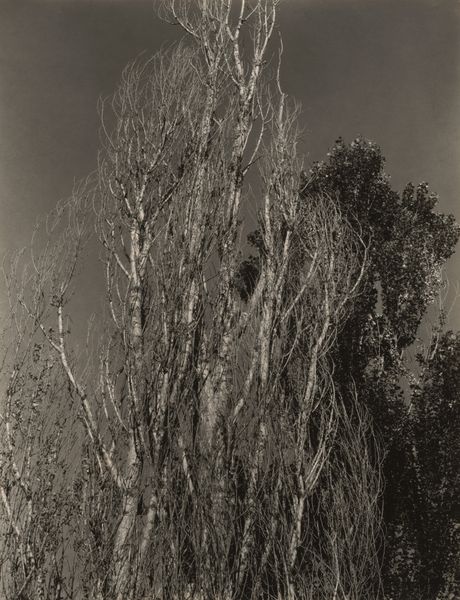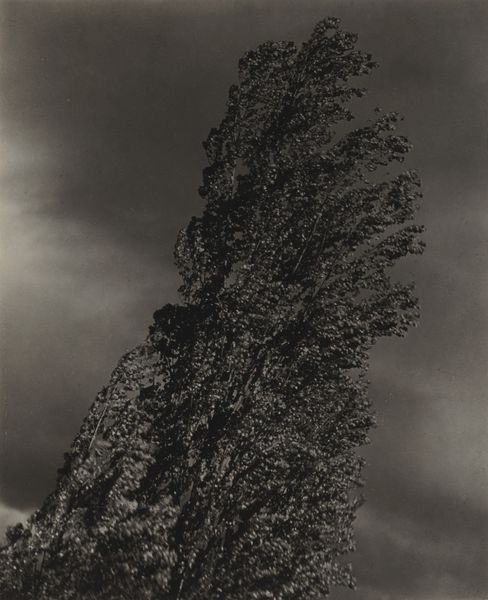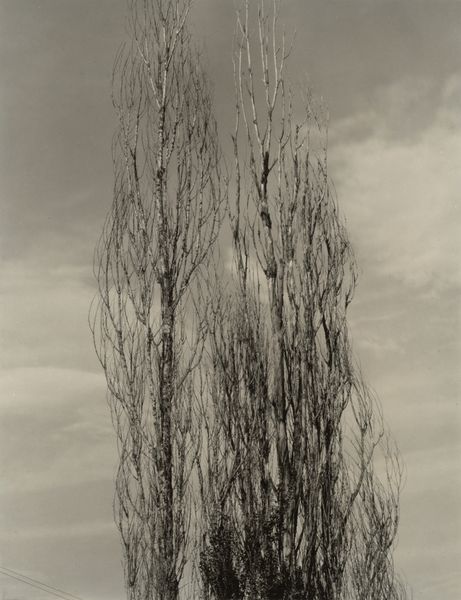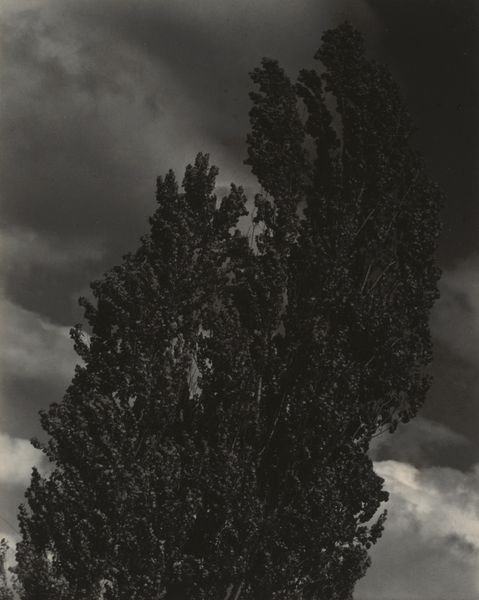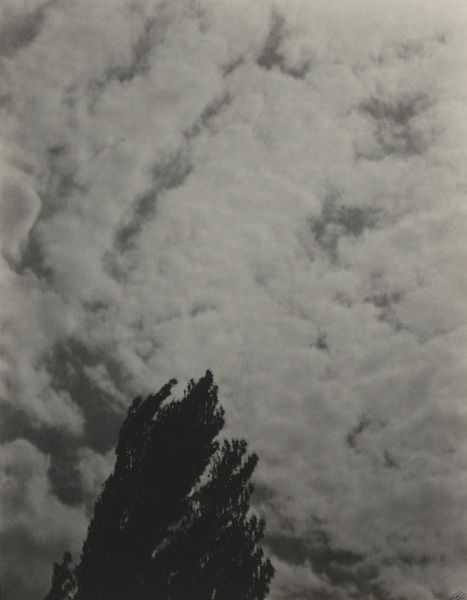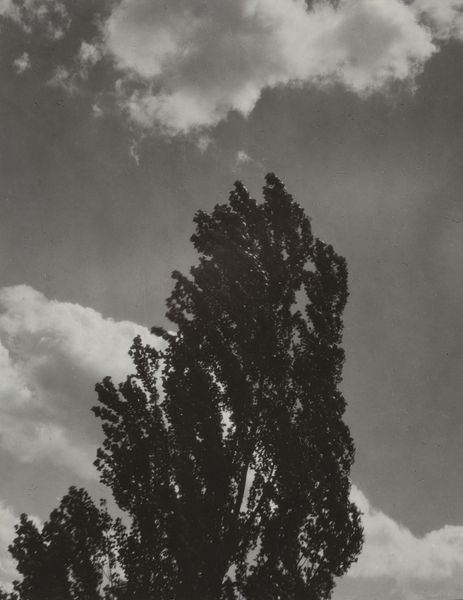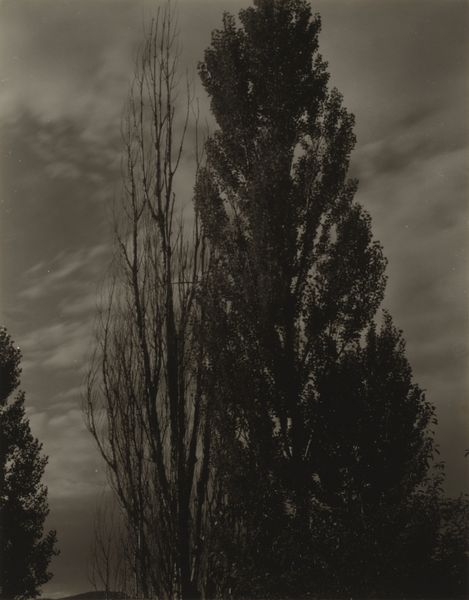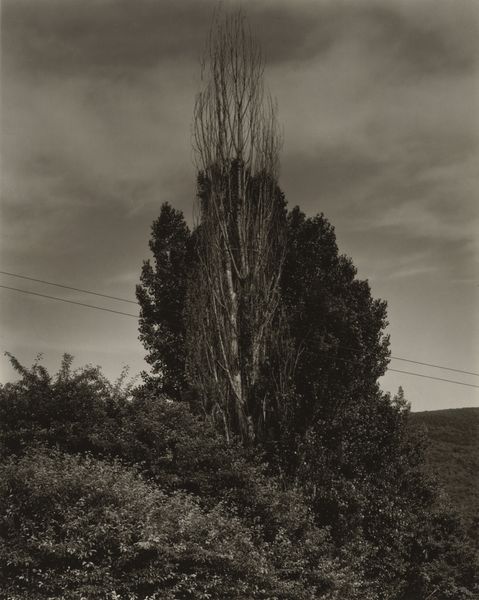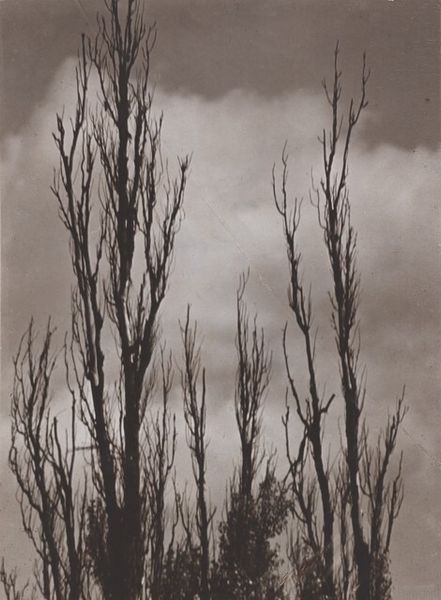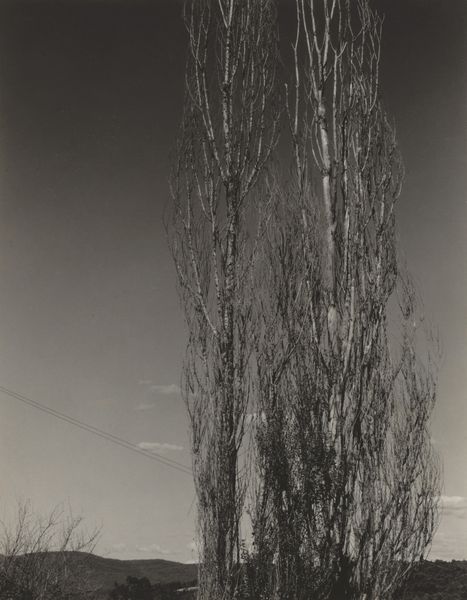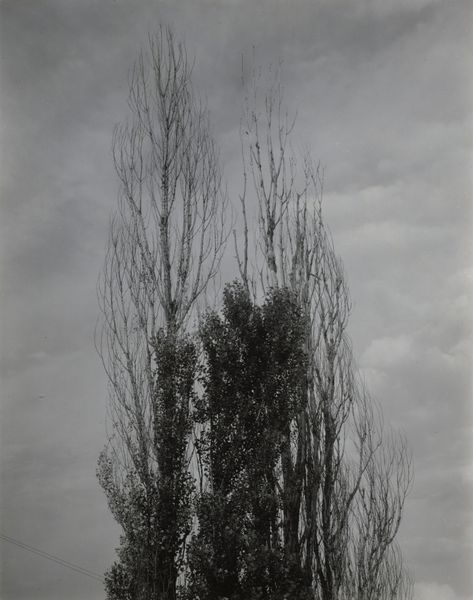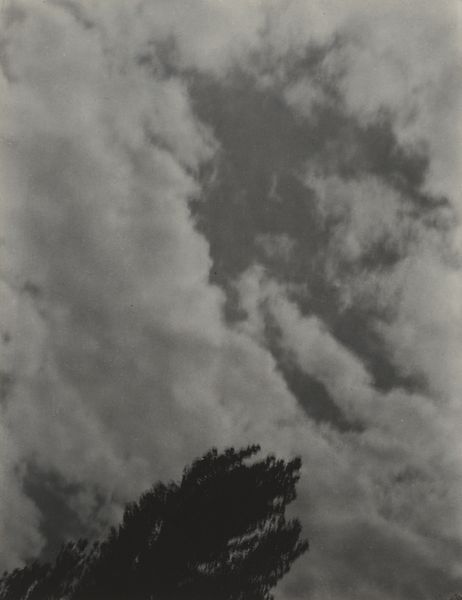
photography
#
pictorialism
#
landscape
#
photography
#
monochrome photography
#
modernism
#
monochrome
Dimensions: sheet (trimmed to image): 11.9 x 9.3 cm (4 11/16 x 3 11/16 in.) mount: 34.9 x 27.6 cm (13 3/4 x 10 7/8 in.)
Copyright: National Gallery of Art: CC0 1.0
Curator: Alfred Stieglitz's 1931 photograph, "Poplars—Lake George," presents a stark and somewhat somber study of natural forms. Editor: Yes, somber is a good word. There's a heaviness, a dense quality to the monochrome palette. It feels like an elegy almost, the looming trees against that clouded sky. Curator: The composition is meticulously crafted, directing the eye upward to the interplay between the trees and the sky, it uses line and tonality to capture depth. There is, in fact, a very strong symbolic interpretation of the trees; they create a sort of dance on the stage, an interplay between their solid mass, texture, and their surroundings. Editor: You’re right to point that out—and when considering materials and processes, this isn't just a landscape; it’s a document of Stieglitz grappling with photographic techniques of his era. What kind of printing process would have created such dark and light ranges and clarity of tonal variations here? I wonder what paper he used? He has used that lake so often; was there some easy access to a personal dark room there? Curator: Pictorialism’s lingering influence is certainly present here, but the sharp focus and directness speak to Stieglitz's growing embrace of straight photography. We must notice how he captured nature as he found it; but within that captured reality he makes very refined design choices. Editor: Yes. And thinking about the context, this image emerges from a time of great transition, both in Stieglitz's life and in the broader art world. It's fascinating how he harnesses both craft and a specific viewpoint to distill a sense of place—Lake George serving as his ongoing subject and studio and exploration of materials. This is the social network of images he builds from the place where he made his labor—it speaks to the broader shift toward abstraction and a heightened focus on materials. Curator: His command of tonal values creates an atmospheric intensity. This really transforms what could be an unremarkable stand of trees into a really quite moving statement on mortality and permanence. It invites meditation, in its structural qualities. Editor: A truly powerful piece. It offers us insight into materials, process and practice that create unique art moments.
Comments
No comments
Be the first to comment and join the conversation on the ultimate creative platform.

